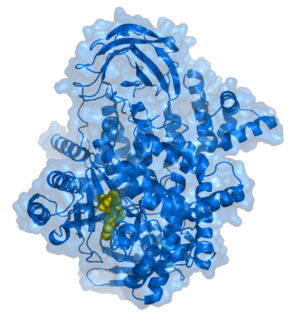ASCO 2010 Preview #2: PI3K and mTOR inhibitors
One of the interesting things about scientific conferences such as AACR and ASCO is that everyone looks at the same data differently as if it were through a kaleidoscope.
Brand marketers focus on their competition by tumour type or disease, scientists look at specific mechanisms or pathways, investors look at particular companies and so on.
Someone asked me the other day how I analyse the data. I hadn't really thought about it much until then, but on reflection what I'm interested in is trends and how research evolves from a big picture science view so that means I look at pathways like a true biochemist. This also teaches us where the gaps are and what opportunities may arise in the future. It's not exactly rocket science, but it is a useful approach sometimes.
 Image via Wikipedia
Image via Wikipedia
One of the clear trends emerging at AACR the other week is that dual inhibition of both the PI3K-mTOR and RAS-ERK pathways may be necessary in some cancers such as melanoma to reduce cross-talk, feedback and feedforward loops, drug resistance and loss of PTEN gain of function, just as one might also target IGF-1R and EGFR to reduce cross-talk and add in another inhibitor, eg MEK or AKT.
Given the increasingly critical role of MEK and AKT in various combinations in the future to reduce the potential for drug resistance occurring, this bodes well for a host of companies. I wasn't, therefore, surprised to see Novartis snap up Array's MEK inhibitor (ARRY-162) given they already have an mTOR on the market (everolimus, Afinitor), two PI3-kinases in development and others including a RAS inhibitor. Having a MEK inhibitor as well may therefore give them a lot of flexibility with different combinations in multiple cancer types if this approach pans out.
Merck are also following a similar approach with their mTOR inhibitor, ridaforolimus, which they have finally grabbed commercial control of from their partner, Ariad. Let's not forget they also have an AKT inhibitor, dalotuzumab and a MEKi through their partnership with AstraZeneca to play with too.
This is all good news for several biotech companies though, if some big Pharma companies start catching onto the trend and realise they need may a PI3K-mTOR inhibitor and a MEK or AKT inhibitor to stock up in their pipeline before the field gets too crowded.
Which companies might have new and interesting data in this area?
Well, Keryx and Aeterna Zentaris, Semafore, Calistoga, Intellikine and a few others all have PI3K inhibitors in development, while Exelixis have a deal in place with sanofi-aventis for XL147 and XL765 and Roche/Genentech have a pan-PI3K inhibitor, GDC-0941. Novartis have two (BEZ235 and BKM120). Some of these compounds are single PI3K inhibitors and some are dual inhibitors of PI3K-mTOR.
Looking at the ASCO abstract titles, Exelixis appear to have the most abstracts in this area this year, so it will be interesting to see what sort of data they have across a range of different tumour models and early phase I results in solid and hematologic malignancies, with a variety of different combinations.
One session I'm really looking forward to at this year's ASCO is a Clinical Science Symposium entitled, "Paths for Clinical Development of PI3K Inhibition" with some of the heavyweights in the field such as Neil Rosen (MSKCC), Skip Burris (Sarah Cannon), Jose Baselga (Spain) and Carlos Arteaga (Vanderbilt). Arteaga is presenting a talk in that session entitled, "Next steps in clinical development of PI3K inhibitors?"
More later on this blog after the posters and the data become available at the meeting.
![Reblog this post [with Zemanta]](http://img.zemanta.com/reblog_e.png?x-id=a00cea0a-1b38-4a54-8304-f0823641685a)
One Response to “ASCO 2010 Preview #2: PI3K and mTOR inhibitors”
[…] Pharma are developing PI3 kinase inhibtors, including CAL-101, which I have blogged about at ASCO earlier this year and on the PI3K class in the past. They are currently evaluating the drugs in […]
Comments are closed.